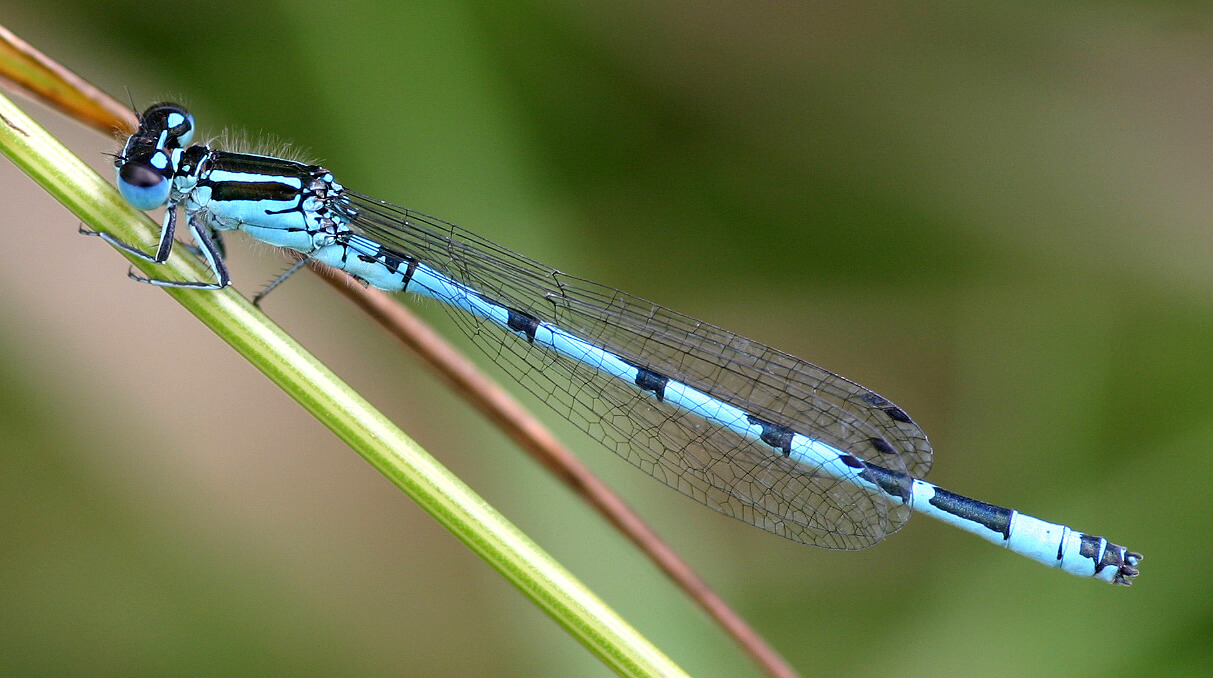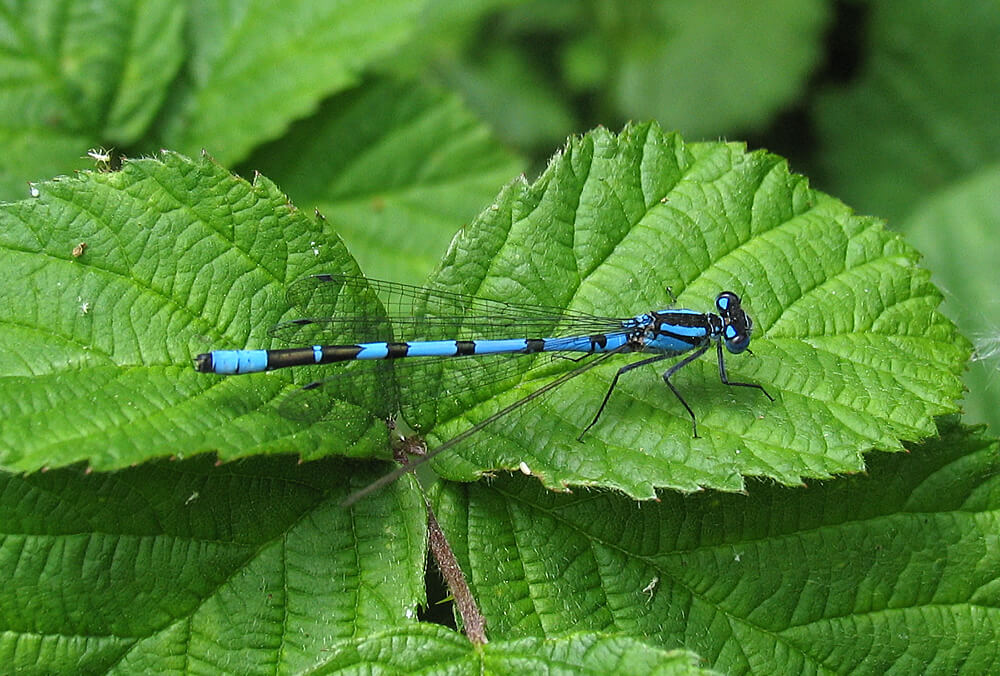Species Information:
Length: 29-31mm
Flight Period: June to August (occasionally May)
The Southern Damselfly (Coenagrion mercuriale) is one of several members of the genus Coenagrion currently to be found in the British Isles and is a member of the family Coenagrionidae.
Male: distinctive 'mercury' mark on segment 2 of the abdomen. Also use the coenagrion spur on the side of the thorax and a small blue line between the eye spots as additional, but not distinctive, features.
Female: Coenagrion species are very similar making them difficult to identify.
The flight is weak and low; they stay close to the breeding site and do not appear to disperse easily to colonise new areas. Low shrubs and Juncus spp. are used for perching, roosting and feeding forays. Eggs are laid in submerged tissues of aquatic and emergent vegetation and the plant dwelling larvae usually take two years to mature.
Larvae: The larvae are distinctive in that they have very small, un-patterned caudal lamellae.
Habitat:
In the UK the Southern Damselfly is primarily a species of base-rich runnels and streams often within acid heathland areas. However, it also occurs on water meadows in the flood plains of two chalk rivers, a habitat said to be more typical of many continental sites. At breeding sites the water is typically shallow and slow-flowing over a gravel or marl bed with patches of organic detritus. It may be that a more or less constant, relatively high, water temperature in winter in the spring-fed sites is particularly important in determining site suitability.
Status & Distribution:
The Southern Damselfly is a rare species in the UK. In the UK, it is living on the extreme north-western fringe of its European range. Its two main strongholds are in the New Forest, Hampshire and the Preseli mountains, Pembrokeshire. Smaller colonies are found in Devon, Dorset, Anglesey, Gower, Oxfordshire and on the flood plains of the Test and Itchen rivers in Hampshire. There are old records from Cornwall and Somerset and elsewhere in Devon, Dorset and South Wales. The range of the species has contracted in the last thirty years.
The main factor thought to be influencing the decline of the species is the removal of grazing animals that maintain the open nature of the species' breeding sites. Other potential threats are abstraction of water, leading to a lowering of the water table, drainage due to agricultural and forestry pressures, and excessive nutrient enrichment from the runoff of nitrogenous fertilisers from adjacent agricultural land. Isolation and scarcity of habitats is a cause for concern.
Beyond the UK, the Southern Damselfly's distribution is in Western Europe, principally around the western Mediterranean, including Northwest Africa. It has vanished or is on the edge of extinction in 7 countries situated along the northern boundaries of its distribution (Belgium, The Netherlands, Luxembourg, Slovenia, Romania, Poland, Austria) and is declining in 3 others (UK, Germany, Switzerland). A world distribution map of Southern Damselfly can be found in Askew, R. R. (1998), The Dragonflies of Europe, Harley Books.
A very useful account of the ecology of the Southern Damselfly is available to download as a .pdf document.
This species is protected under Schedule 5 of the 1981 Wildlife and Countryside Act, as amended, which protects it against a variety of factors including killing or selling of individuals and damage or destruction of habitat. In Great Britain this species is classified as Rare (category 3) on the Red Data Book List (it also features on the red list of other Countries in Europe), and it is a British Dragonfly Society "Key Species".
Similar Species:
This species is easily confused with the other members of the genus Coenagrion and with the Common Blue Damselfly (Enallagma cyathigerum). Look at S2 (on the males) for distinguishing characters. Southern Damselfly is quite small compared with other similar species and will only be found flying in full sunshine in the hottest part of the day. The females can be particularly tricky to distinguish apart.

.jpg)
